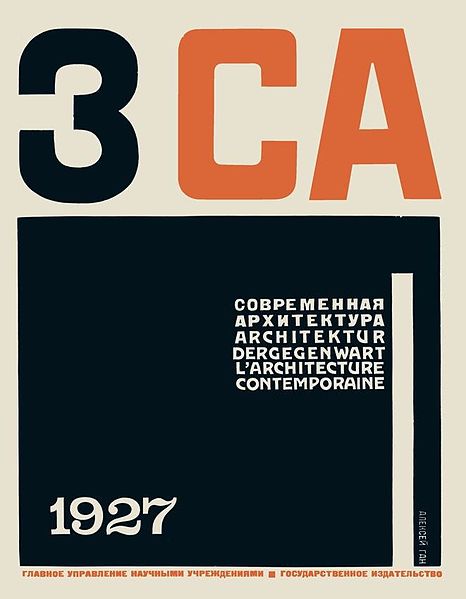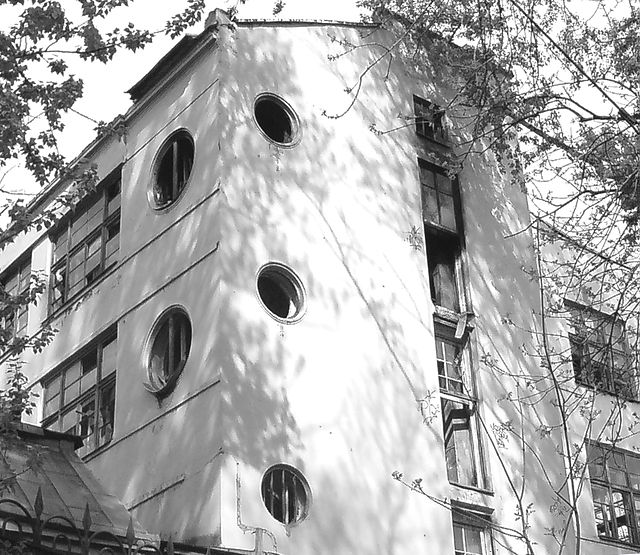The OSA Group was an architectural association in the Soviet Union, which was active from 1925 to 1930 and considered the first group of constructivist architects. It published the journal SA. It published material by Soviet and overseas contributors. However this led to them being attacked as a 'Western' group and some individuals as being 'bourgeois'. After the closure of the group, their modernist approach to architecture and town planning was eliminated in the Soviet Union by 1934, in favour of social realism.
Cover of SA, 1927, designed by Aleksei Gan
Boris Velikovsky with Barsch, Gaken et al., Gostorg Building, 1926.
Constructivist architecture
Constructivist architecture was a constructivist style of modern architecture that flourished in the Soviet Union in the 1920s and early 1930s. Abstract and austere, the movement aimed to reflect modern industrial society and urban space, while rejecting decorative stylization in favor of the industrial assemblage of materials. Designs combined advanced technology and engineering with an avowedly communist social purpose. Although it was divided into several competing factions, the movement produced many pioneering projects and finished buildings, before falling out of favor around 1932. It has left marked effects on later developments in architecture.
Tatlin's Tower, The Monument to the Third International, 1919 (Vladimir Tatlin)
Shukhov Tower, Moscow, 1922. Currently under threat of demolition, but with an international campaign to save it.
The print shop of Ogonyok magazine designed by El Lissitzky
Zuev Workers' Club, 1927






